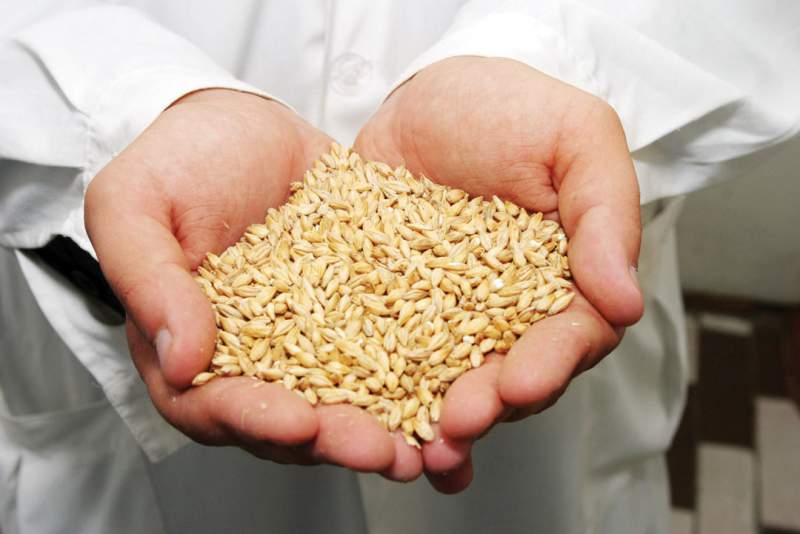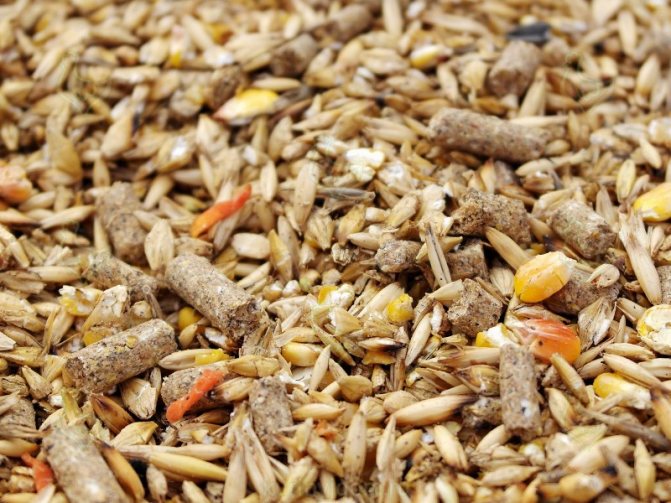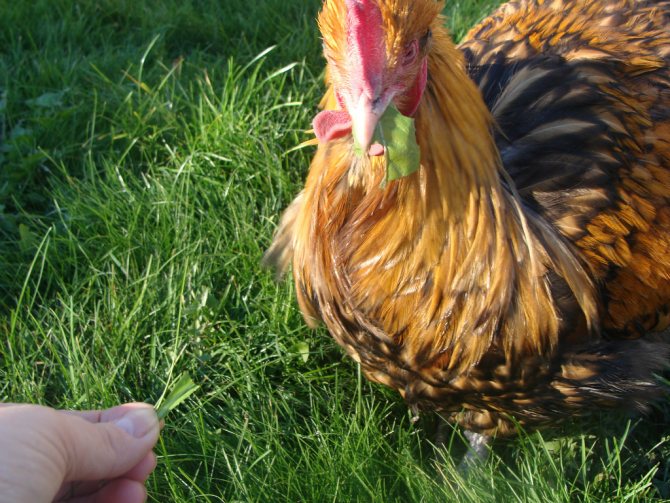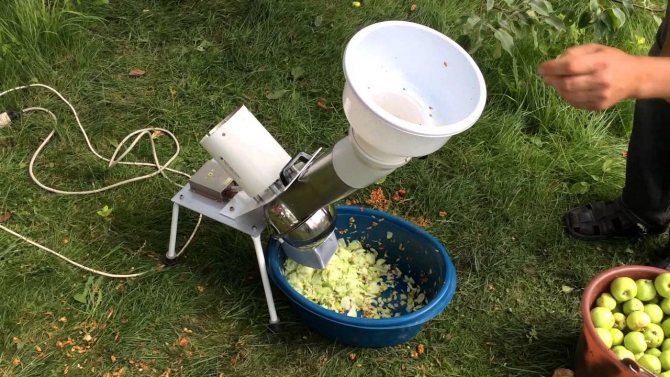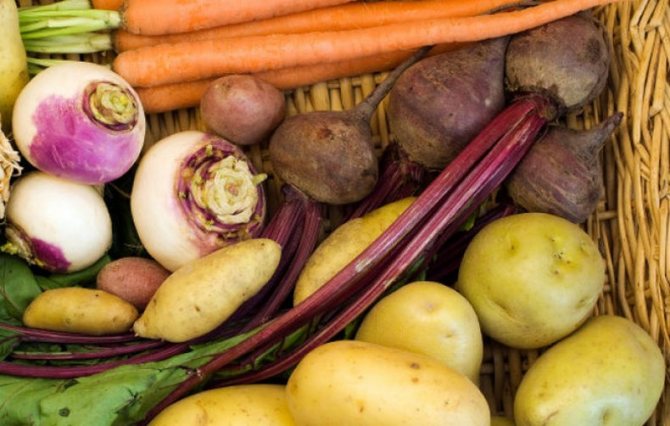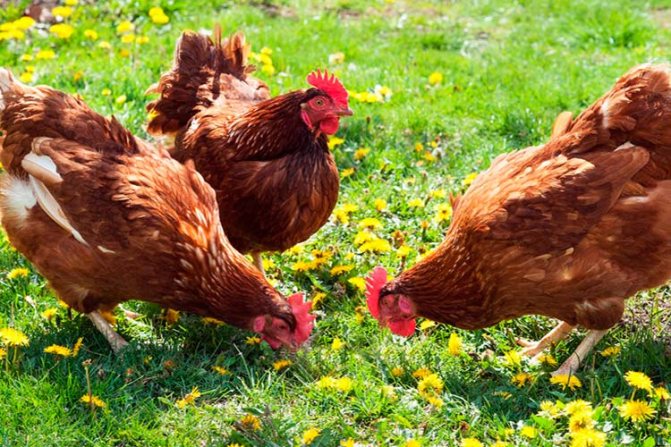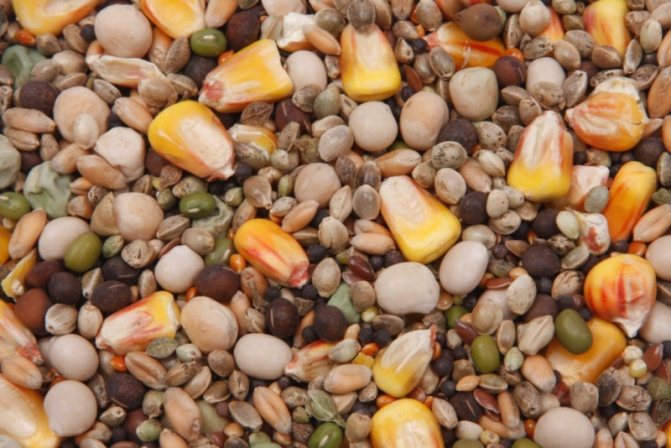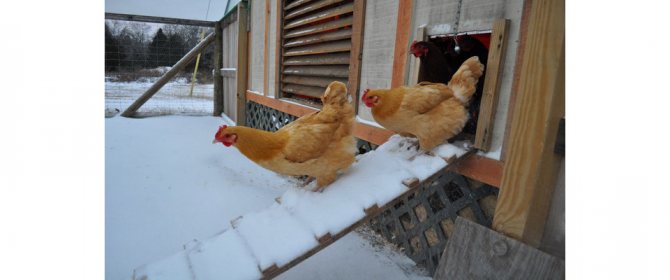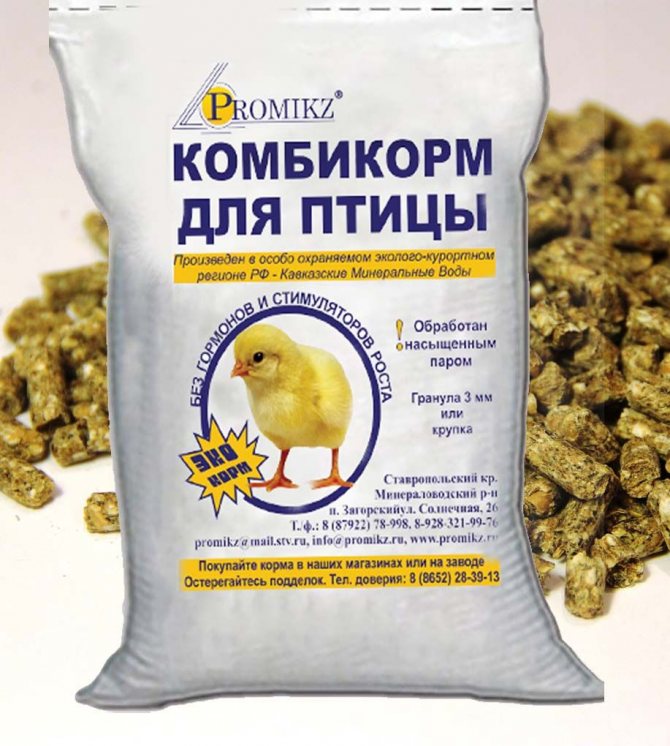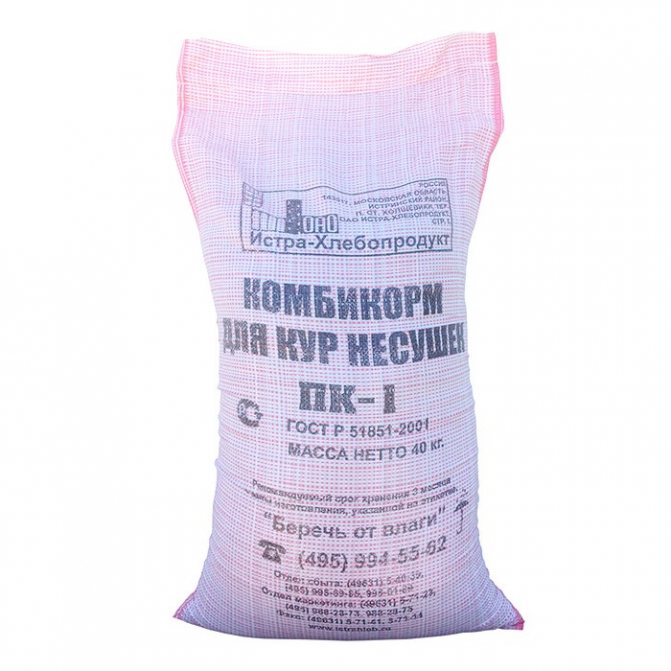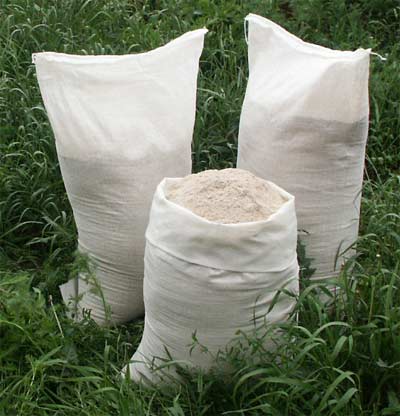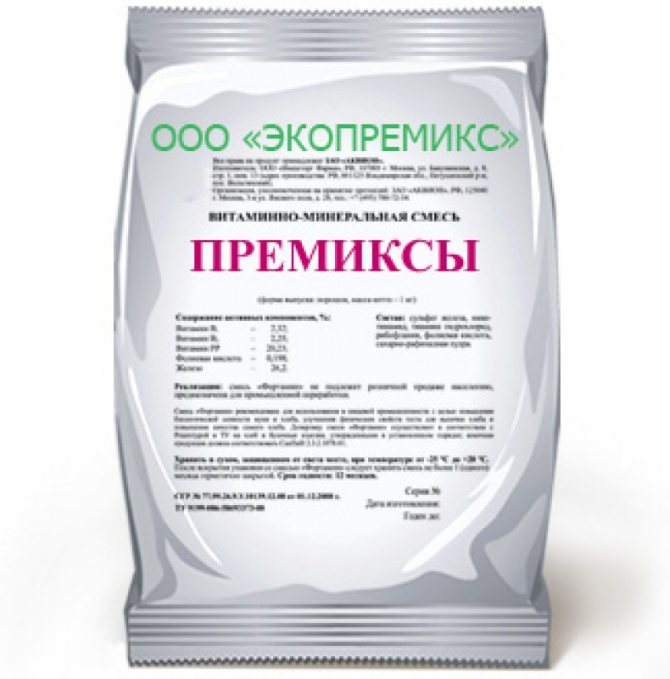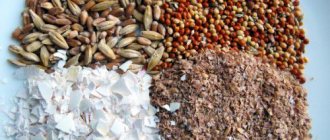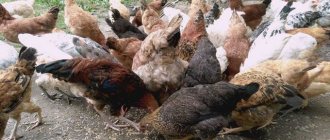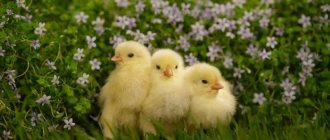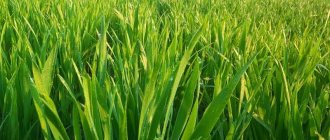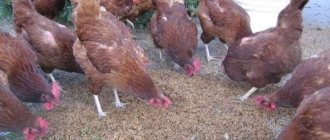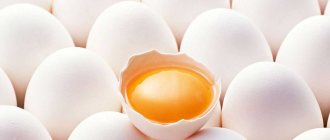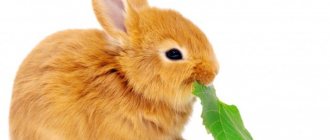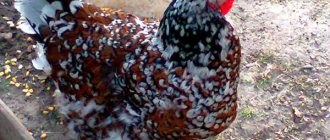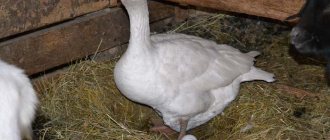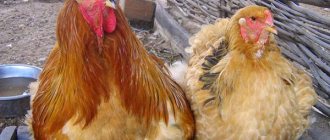How to feed egg-bearing hens correctly?
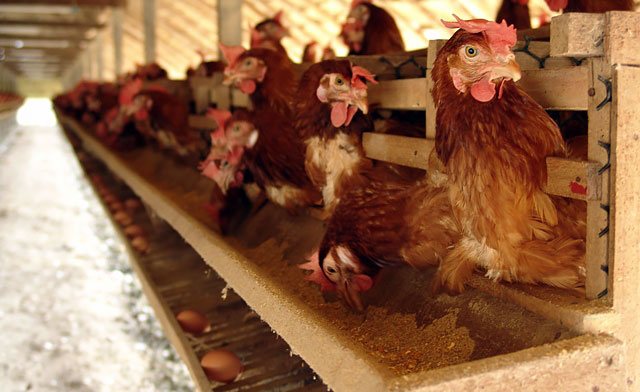
How to feed laying hens to run better
Feeding frequency
The basic rule is that domestic chickens of egg breeds must be fed at least twice a day: immediately after waking up and one hour before the lighting in the chicken coop is turned off. Moreover, all the elements important for the bird's body should be contained in each portion. Ready-made compound feed purchased on the market greatly simplifies the process. In this case, you will need to independently include only grain, vegetables and fresh herbs in the chicken diet.
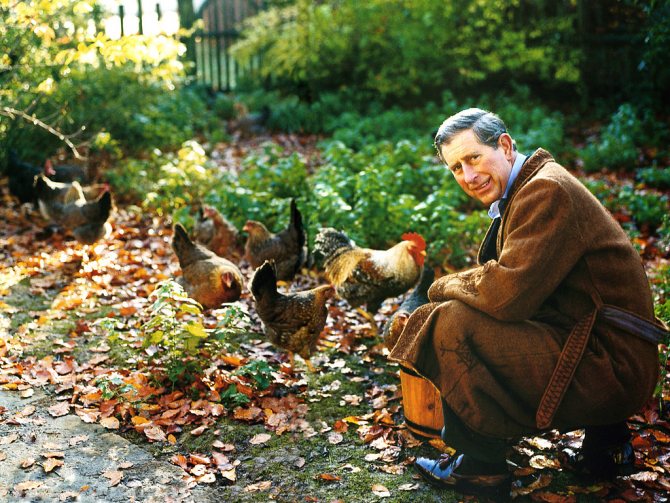

You need to feed chickens at least twice a day.
In some cases, feeding can be three or four times a day. This is true for juveniles up to 48 weeks of age. It is also recommended to carry out a slight increase in portions in the cold season to obtain the required amount of energy for the chickens and protect them from hypothermia.
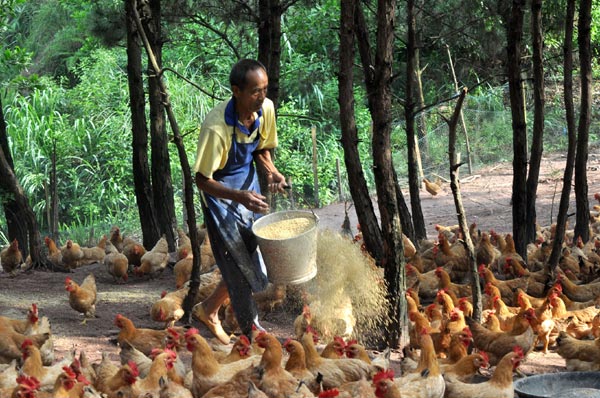

Feeding chickens - photo
Features of feeding in winter
In winter, the frequency of feeding the hens is increased up to 4 times, and the feed rates are calculated according to this principle - the colder it is in the chicken coop, the better and more complete the food should be. If the room is well heated, care should be taken to ensure that the chickens have constant access to clean water.
Important! Overeating is unacceptable for hens. Do not overfeed your birds and always make sure they do not accumulate fat if you expect high egg production.
The best food for winter is compound feed, supplemented with juicy vegetables: carrots, pumpkin, fodder beets. If the chickens continue to lay, potatoes must be present in the diet.
The second feed may consist of a warm mash of whey. In the evening feeding, grain is added to the compound feed. It takes a long time to digest, and due to this energy, birds warm up at night.
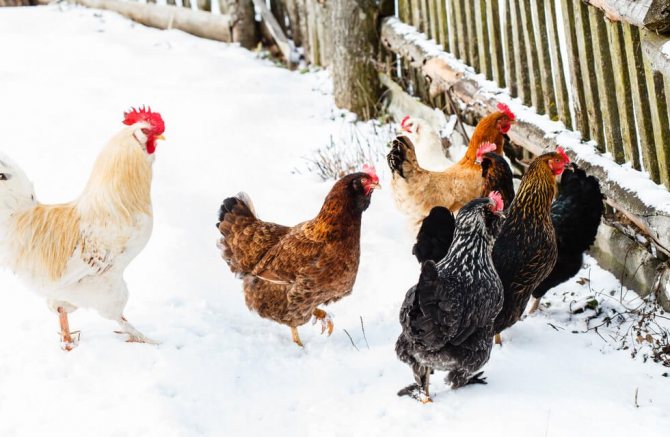

Since there is no fresh greens in winter, grass flour or a little silage is added to the mash. From the summer, hay can be prepared, which is then tied in bunches and suspended - the birds themselves peck at it and find what they need. A good vitamin supplement for winter is sunflower cake: it is steamed and added to the mash.
To improve metabolism and maintain egg production, it is advisable to release birds for a short time outside for walks. Closer to spring, it is worth starting to germinate grain - chickens love it, in addition, it is a good source of vitamin E.
Did you know? For agriculture, especially for gardening, chickens represent a considerable danger. As soon as the owner loses his vigilance, the birds on the run are capable of destroying vegetation in large areas, destroying crops or digging holes right in the garden to "swim"
in them.
Feed preparation rules
Food should be weighed before serving to avoid malnutrition or overeating of birds. Any deviations from the norm negatively affect the health and egg production of chickens. It is better to fill the feeder not to the brim, but 2/3 so that the birds cannot scatter and trample the food.
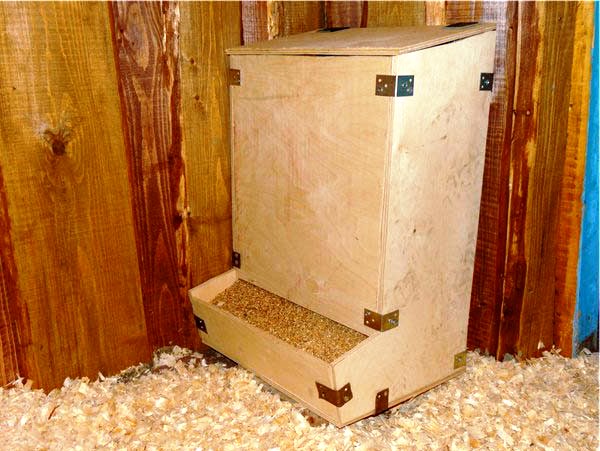

Hopper type feeder
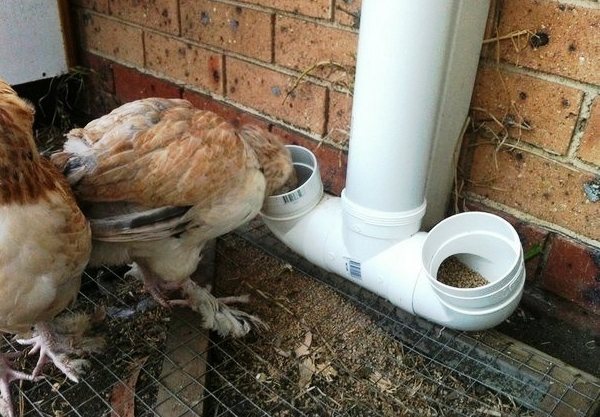

Chicken feeder
Sometimes laying hens are given a self-prepared mash. Such food must be prepared only for one meal, because it is perishable.Confirming the economy and practicality of keeping, poultry are not too whimsical in food: leftovers from the table with the addition of additional ingredients will not harm them, and an important part of the diet of chickens is made up of inexpensive vegetables, fresh grass, and plant tops.
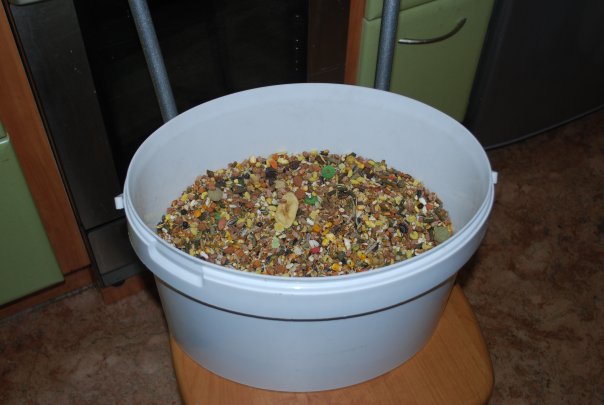

Mash
It is important to know that fresh bread recently brought from the bakery is not suitable for adding to the feed of laying hens. Baked flour products in the stomachs of birds swell and stick together, which can lead to their death. It is permissible to use bread only in the form of rusks, ground into powder, provided that there is no mold. The content of this additive is a maximum of 30% of the total weight of the feed.


Is it possible to give chickens bread
The correct daily diet for laying hens
The presence of egg-bearing breeds of grain, vegetables, fresh vegetation and mineral elements in the diet of domestic chickens contributes to the rapid laying and gaining the required body weight. To accelerate productivity, the daily menu should consist of certain components and correctly calculated proportions.
| Component | Amount in grams |
| Boiled potatoes | 100 |
| corn | 120 |
| cake | 7-8 |
| wet mash | 25 |
| bone flour | 2 |
| a piece of chalk | 3 |
| yeast | 1 |
| salt | 0,5 |
In the morning, feeding should include a wet mash with the addition of crushed egg shells, bone meal, boiled potatoes, grain, food waste from the table.
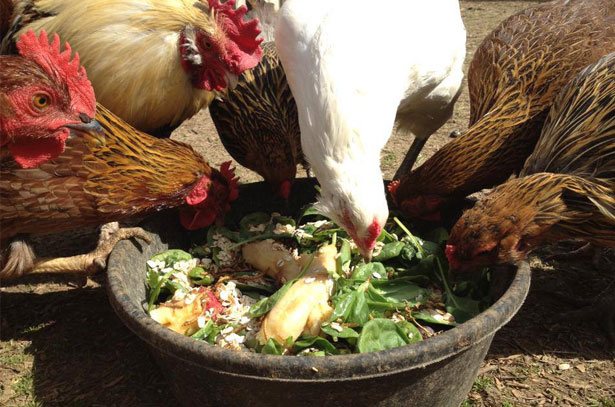

Chickens peck on a wet mash
For an evening meal, it's best to use whole grains mixed with other menu items not consumed during the day. It is recommended to steam some of the grain to improve the metabolism and digestion of chickens. You should not give the birds the same grain for several days in a row, it is better to alternate it daily: today - barley, tomorrow - millet, and so on.


Grains in the diet of chickens
How to calculate portions based on body weight of a bird
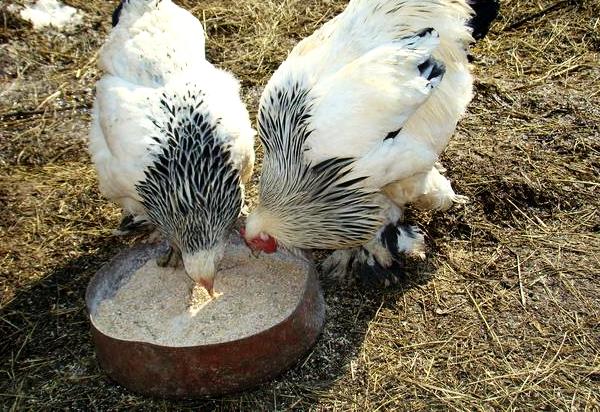

How much feed does a laying hen need per day
Laying hens, depending on the breed and egg production, can have different weights. Accordingly, they should receive different amounts of feed. For example, an ordinary domestic chicken weighing up to two kilograms, which produces a hundred eggs per year, normally needs to eat about 125 g of feed per day. A bird weighing two kilograms will need 130 g of food. Further, for every 250 g of chicken weight, 10 g of feed is added. It is necessary to take into account the increase in egg production - for every three dozen eggs, 100 g is added.
How to feed chickens to increase egg production?
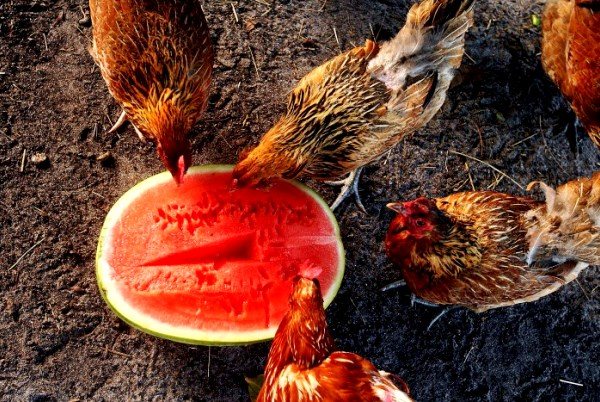

How to increase egg production
Factory compound feed for laying hens
Combined feed is a mixture specially developed for feeding chickens, taking into account the individual characteristics of the breed and all standards for a balanced diet. The composition of high-quality mixed feed for egg chicken breeds includes such components as:
- proteins;
- carbohydrates;
- fats of both vegetable and animal origin;
- coarse fibers (fiber);
- as well as essential vitamins and minerals.
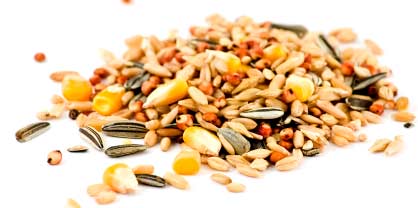

How to choose compound feed
If one of the components predominates in a certain type of combined feed, it is recommended to mix the products. It is important to carefully study the composition and if growth hormones or any synthetic additives are found in it, it is better to refuse to purchase such a product for layers - this can adversely affect the health of the birds.
For chickens that spend more time indoors, an easily digestible, crumbly product is the best choice. And for those birds who have the opportunity to often walk, the combined feed in granules is more suitable.
The most common types of industrial compound feed
| Name | Description |
| It is the most popular among the combined feeds intended for hens of egg-bearing breeds.Its main advantages include the absence of the need for preparation and mixing. Its composition is a full range of nutrients that chickens need to improve the egg production process and strengthen the immune system and health of the whole body. The composition is dominated by wheat, contains vitamin and mineral supplements. |
| Concentrated feed, which is best used in combination with supplements, as it cannot provide all the nutrients chickens need. The main ingredients of the feed are wheat bran and grain crops. |
| This type of combined feed is used in combination with a mixed type of feeding for layers. Its purpose is to replenish the volume of the daily needs of the body of chickens for useful elements. Such a product, due to its composition, stimulates the speed of laying eggs and increases the strength of their shell, has a positive effect on the general condition of the bird's body, strengthening health and resistance to diseases. In addition to the main microelements, the feed contains vitamins of groups A, K, C, B and biotin. |
Throughout the day, with the standard mode of two meals a day, the chicken needs an average of 80 to 130 grams of compound feed. It is recommended to increase the portion of the combined feed to 165 grams if the bird additionally receives fresh food additives. Exceeding the daily norm threatens obesity and hypervitaminosis in chickens, which significantly reduces egg production.
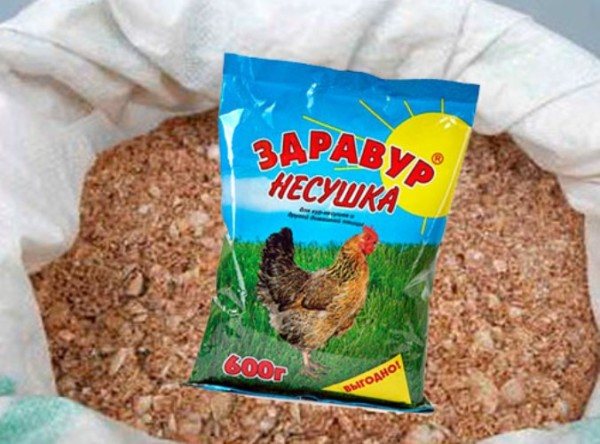

Premix on the background of a bag with compound feed
Nutrients
In home farming, care must be taken to ensure that birds receive a varied diet that is rich in all the ingredients needed to maintain health and growth. It is necessary to maintain a balance of proteins, carbohydrates, minerals, vitamins and fats. Let's talk about each element in more detail.
Protein
The main material that is involved in the process of building cells in the body of chickens. Protein is the main ingredient in eggs.
Layer feed must contain vegetable proteins. It can be cake, rapeseed, soy. Animal fat proteins can be fed as fishmeal, fish waste, and some chickens prefer worms.
Fats
Fat is also essential for the body as it provides the bulk of energy for birds. The element is deposited under the skin, spent on the formation of egg production.
For poultry to get healthy vegetable fats, it needs to eat corn and oats.


Carbohydrates
This component gives the answer for the correct functioning of the muscular system and all internal organs of chickens. Based on this, it follows that the feed developed for laying hens must be rich in starch and sugar. Don't forget about fiber.
Juicy feed contains a huge amount of carbohydrates: potatoes, beets, carrots. However, to supply the correct vital functions of chickens, it is necessary to add a whole seed, it is it that is rich in fiber.
Vitamins
Chickens will die without vitamins. Particular attention should be paid to vitamins such as A, B, D. If such components in the bird's body are in short supply, then immunity decreases, it starts to hurt, and productivity decreases. The main sources of useful vitamins are herbs during bud formation, fish oil, yeast, and pine needle flour.
Minerals
Minerals are foundational of the bird's skeleton and eggshell. It is necessary to equip additional feeders in your chicken coop, they should contain pieces of gravel, chalk, bone meal, ash or shells.
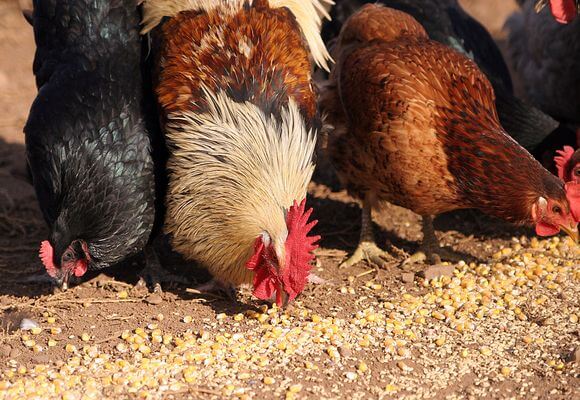

Root vegetables, vegetables and fresh herbs
Vegetable porridges or wet mash are prepared from chopped boiled potatoes, beets, cabbage with the addition of bone meal or chaff.A mixture of vegetables as a compound feed perfectly satisfies the hunger of chickens, contributes to the proper functioning of the digestive system, saturates the body with important trace elements and fiber, which are needed for the formation of eggs.
The lack of vitamins, calcium, phosphorus in the body of layers can be replenished by walking birds in the warm season, when the ground is covered with fresh grass. However, chickens do not have enough of the greens that they get on their own. In their diet, it is also necessary to include top dressing from: vegetable tops, dandelions, alfalfa, nettle leaves and stalks, legumes, clover and so on. You need to give additional greens in finely chopped form.
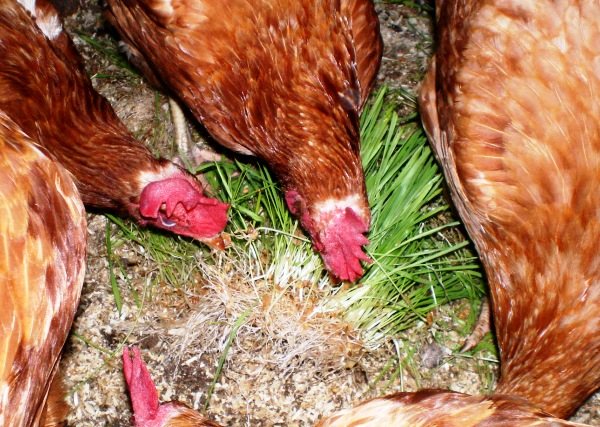

It is important to give chickens greens
Immunity and the general health of laying hens, and, consequently, the volume and quality of their products, depend on maintaining a balance in the diet. Lack of such important elements as protein and calcium in the diet can lead to the hen eating its own eggs. In addition, a similar habit from one chicken is often transmitted to all its relatives in the chicken coop.
The simplest compound feed
A simple home feed recipe for laying hens includes the following components:
- corn grains - 500 grams;
- wheat grains - 150 grams;
- barley grains - 100 grams;
- pea grain - 40 grams;
- bone or fish meal - 140 grams;
- sunflower meal - 100 grams;
- roughage - 50 grams;
- NaCl - 3 grams;
- feed yeast - 50 grams;
- vitamin supplements - 15 grams.
From the specified amount, 1 kg of ready-to-eat compound feed is obtained. These feeds can be mixed in advance and stored in a dry place.
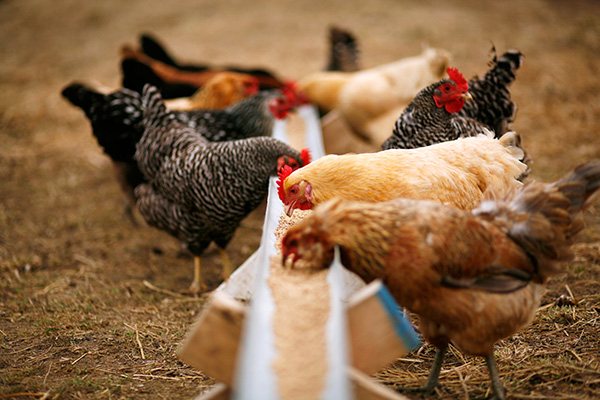

Birds are given compound feed as a basis on which a wet mixture is prepared, or fed in the form in which it is. Wet mixes are prepared using whey, broth, or warm water. Some farmers have come to the conclusion that chickens eat heated feed with more pleasure than ordinary chickens.
Possible reasons for low productivity
Even a thorough study of the correct diet for egg-laying chickens cannot guarantee that there are no problems with reduced productivity. There may be several reasons:
- Molting can provoke a decrease in egg production. During this natural period of plumage change, the chicken's body spends the entire supply of minerals and vitamins to renew the feather cover. It is for this reason that the bird simply does not have the physical strength to produce eggs. During such a period, she especially needs nutrients, so it is recommended to increase the content of animal foods and protein-rich components in the poultry diet.
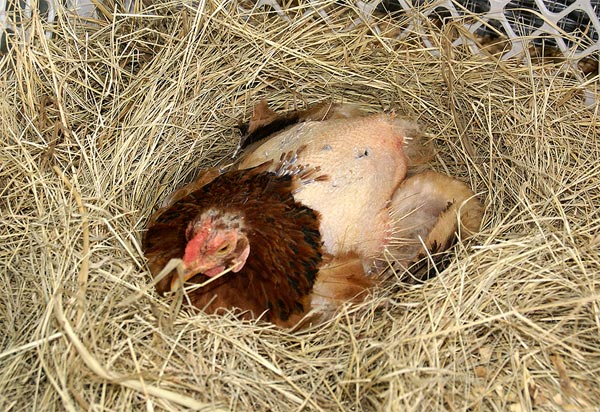

Moulting in spring in laying hens - Violation of the lighting regime of the chicken coop and the usual length of daylight hours for chickens negatively affect them. Insufficiently long daylight hours are considered the most common cause of decreased productivity.
- Frequent changes in the location of the nest.
- Sharp changes in temperature in the chicken coop.
- Unbalanced diet.
- Overfeeding.
- Lack of water or infrequent water changes.
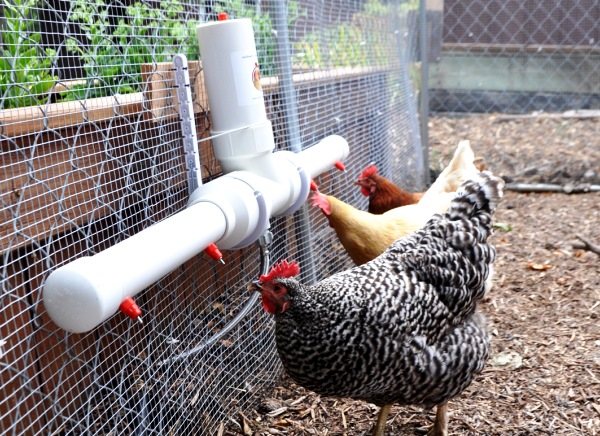

Chickens should always have fresh water. - Diseases of birds.
- Postponed stress.
Their health, resistance to diseases, the compliance of a given breed with the rate of laying eggs directly depends on the correct feeding of the layers. Regardless of the choice of diet option for domestic layers - whether it is a high quality combination feed in combination with natural feed or feed prepared yourself from simple homemade ingredients, there is a need to carefully monitor the balance of important substances in the diet of birds.
Video - How to feed laying hens so that they rush better
Preparing feed for feeding the bird or what to do at home to have more eggs
Vitamin Supplements
Greens
Vegetables and root vegetables
Table salt is a source of sodium and chlorine. It improves the taste of feed, their digestibility and increases the appetite of the bird. When feeding hens, only finely ground salt or dissolved in water is used. If used improperly, bird poisoning is possible.
Gravel and small stones slow down the rate of passage of food through the digestive tract, this promotes better absorption of nutrients. If the poultry farmer for some reason has to feed the bird a lot of oats, then the presence of gravel in the feeder (separate) is a prerequisite.
For germination, oats, barley, wheat or triticale are usually used. It is carried out in rooms with a temperature of at least 20 degrees. They do it like this: they soak the grain in lukewarm water for a day, then sprinkle it in a layer of 5-7 cm on special boards or shelves (it can be in boxes made of container boards) and mix it 3 times a day.
If vitamin A needs to be added to the bird's diet, then germination continues until green shoots 6 centimeters long appear. To speed up the process of the appearance of greens, it is better to expose the grain to the light. By the way, green sprouts can be cut with scissors and fed to the bird, and the grain can be moistened again and a second harvest of greens can be obtained in a few days. Germination not only increases the amount of vitamins, but also improves the taste of the grain itself.
Yeast is carried out in any large containers at a room temperature of 20-25 degrees. The container is filled with warm water (1.5 liters per kilogram of flour mixture), pre-dissolved yeast is poured into it (100 g of yeast per 10 kg of feed) and, with stirring, ground concentrates are poured until a mass of good sour cream density is obtained.
The layer of yeast should not be more than 40 cm, and the container itself should not be covered with a tight lid. Every two hours (preferably more often) the mass is stirred. Usually yeast lasts 5 hours (winter 9), after which the yeast mass is mixed with the main feed mixture in a 1: 5 ratio and distributed to the poultry. This feed works very well on the egg production of chickens.

